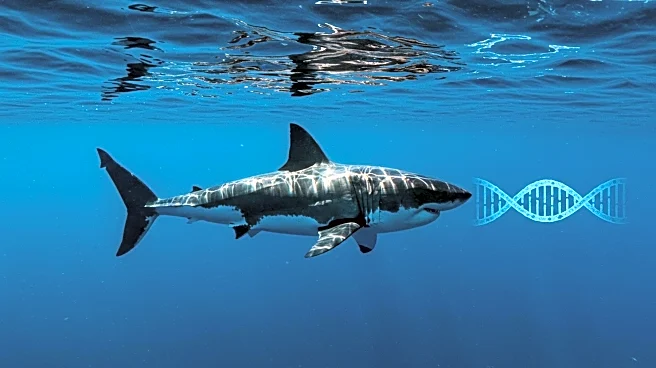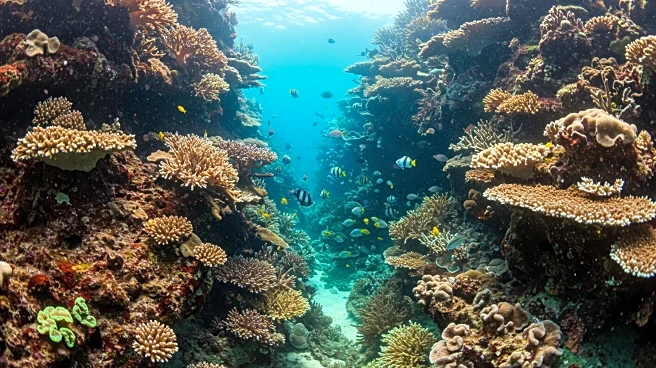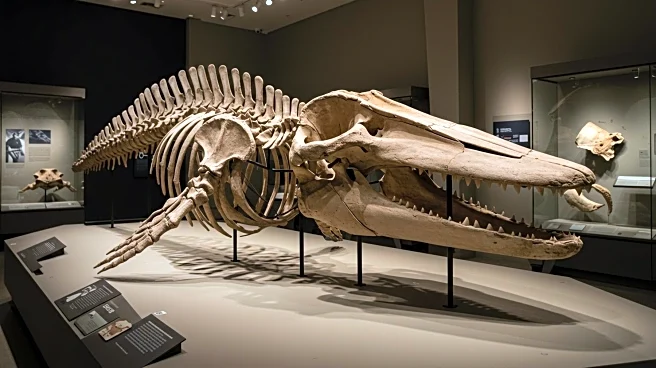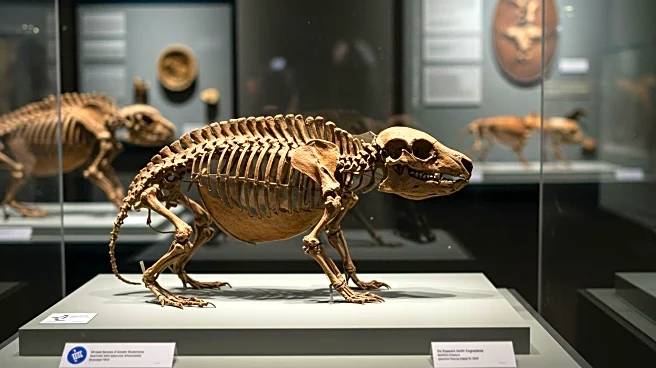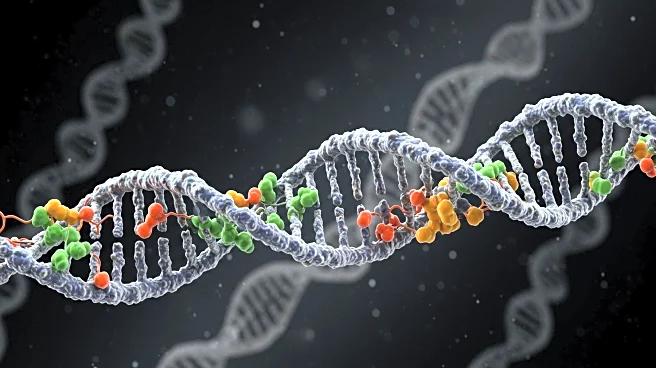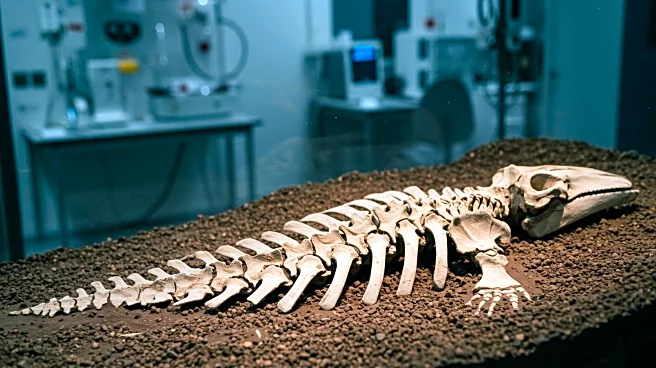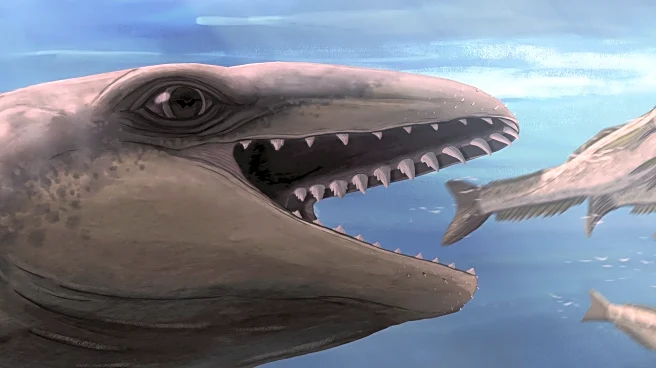What's Happening?
Recent research has unveiled a perplexing DNA discrepancy in great white sharks, challenging the long-held migration theory. Scientists have discovered stark differences between the nuclear DNA and mitochondrial DNA of these sharks, previously attributed to their migration patterns. The study, published in the Proceedings of the National Academy of Sciences, reveals that great whites were confined to a single population in the Indo-Pacific Ocean at the end of the last ice age, about 10,000 years ago, before expanding globally. This finding invalidates the migration theory, leaving scientists without a clear alternative explanation. The study highlights the genetic divergence of white sharks into distinct populations in the southern hemisphere, northern Atlantic, and northern Pacific, despite their low global numbers.
Why It's Important?
The discovery of DNA discrepancies in great white sharks has significant implications for understanding their evolutionary history and conservation. With only about 20,000 individuals globally, these apex predators are vulnerable to extinction. The study's findings challenge previous assumptions about shark migration and genetic diversity, which are crucial for developing effective conservation strategies. Understanding the genetic makeup and population dynamics of great whites can aid in protecting these species from environmental changes and human activities. Additionally, the research underscores the complexity of marine ecosystems and the need for continued scientific exploration to unravel the mysteries of oceanic life.
What's Next?
Further research is needed to explore alternative explanations for the DNA discrepancies in great white sharks. Scientists may investigate other evolutionary forces, such as natural selection, to account for the differences. The study's authors suggest that natural selection could be a potential factor, although it seems unlikely due to the small population sizes of white sharks. Continued genetic analysis and data collection are essential to resolve this mystery and enhance our understanding of shark biology. The findings may also prompt a reevaluation of conservation strategies, focusing on preserving genetic diversity and mitigating threats to shark populations.
Beyond the Headlines
The study raises broader questions about the role of genetic drift and natural selection in shaping the evolution of marine species. The findings challenge the assumption that migration patterns alone can explain genetic diversity, highlighting the need for a more nuanced understanding of evolutionary processes. The research also emphasizes the importance of interdisciplinary collaboration in addressing complex scientific questions, as evidenced by the involvement of multiple institutions and researchers in the study. The insights gained from this research could inform conservation efforts for other marine species facing similar challenges.
